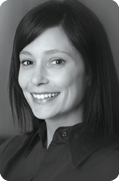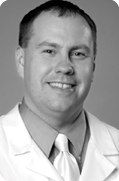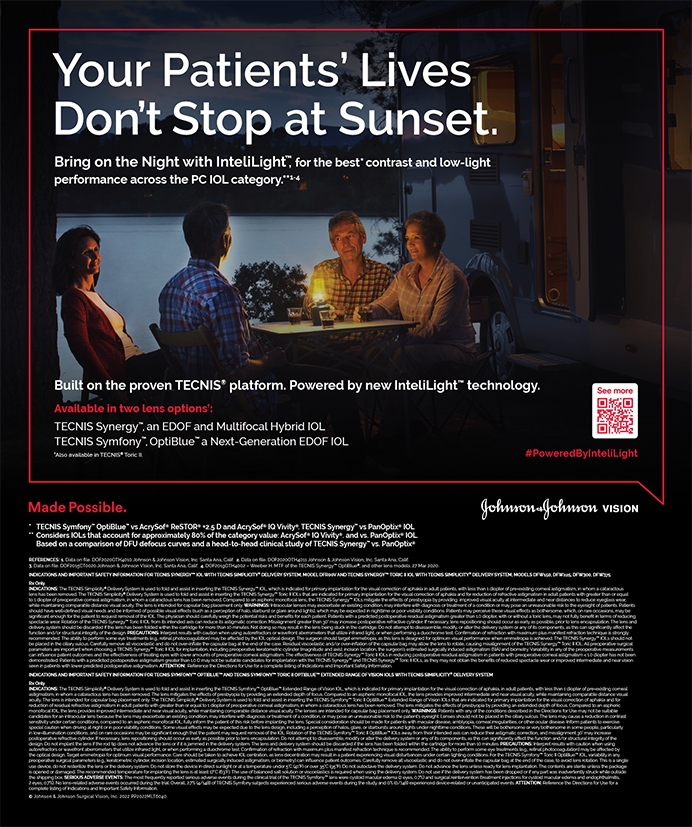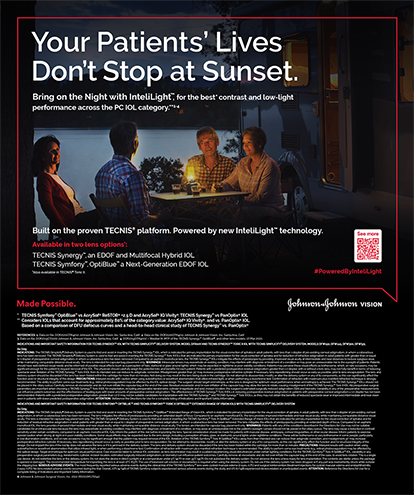Question: If you could select only three devices (be it diagnostic, therapeutic, or a mix of both), what would be at the top of your list for your DED practice and why?
WHITNEY HAUSER, OD

The top three items for my DED practice are lissamine green, meibography, and the BlephEx device (BlephEx).
This dye is essential for the early diagnosis of mild to moderate cases of DED and should be a fundamental for all eye care providers’ practices. It not only stains dead or devitalized cells on the cornea and conjunctiva, but lissamine green also highlights the Line of Marx and identifies the progression of meibomian gland dysfunction (MGD).
Considering that over 80% of DED is evaporative in nature,1 meibography is critical to making the proper diagnosis. I find meibography useful for educating patients about their condition and setting appropriate expectations for those with atrophy and truncation. Both Oculus and TearScience offer tools that include meibography and other valuable features to diagnose and monitor the progression of DED.
From a treatment perspective, I like the utility of BlephEx. I find the device exceptionally effective for treating both MGD and anterior blepharitis. I have seen an improvement in patients’ symptoms and tear breakup time as well as enhanced meibomian gland function. Because Demodex occurs in 84% of patients over the age of 60 years,2 there is no shortage of people who can benefit. The price of the unit and disposables is not prohibitive for doctors or patients.
LESLIE E. O’DELL, OD

The top three “must haves” for my dry eye practice are the Karpecki Debrider (Bruder), my Clinical Laboratory Improvement Amendments (CLIA) license, and something as simple as my transilluminator.
Lid hygiene is proving to play a critical role in preventive care for our patients. A tool like the Karpecki Debrider is a great way to maintain meibomian gland function over a patient’s lifetime. Research shows that removing this keratin plug improves the function of the meibomian glands. I consider this tool to be a great way to start changing the way we think about lid margin health in our patients.
As I started a dry eye center within an established optometric practice, one of my first steps was to apply for a CLIA license and waiver. Doing so opened the door to the current point-of-care testing options and prepared the center for future tear analysis capabilities. Both osmolarity testing and matrix metalloproteinase 9 identification have improved outcomes for my patients by getting me to their proper diagnosis faster.
Meibography has changed the way I practice. If money were no object, I would have a unit today. With a new clinic, I am slowly building capital to invest in technology. Even when I have meibography, however, I will still use my transilluminator during every patient encounter. The tool is not just for checking pupils and extraocular muscle function. I also evaluate each patient for inadequate lid seal using the Korb-Blackie light test, and I can evaluate the meibombian glands for truncation and dropout at the slit lamp. Transillumination is fast and easy, and I believe that we eye care providers have no excuse not to perform this examination on every patient we serve.
RICHARD B. MANGAN, OD

My top three DED technologies are slit-lamp photography, meibography, and the use of compounded products.
Whether a patient has mixed blepharitis, Demodex mites, lissamine green staining, or an incomplete blink reflex, slit-lamp photography with video capability can make a dramatic statement in the eyes of your patient (no pun intended). Not only is it a powerful teaching tool, but it is also an accountability tool. When I show patients with mixed blepharitis what their eyelids look like and then tell them that I will be taking pictures again in 4 to 6 weeks to compare, they are more likely to stick with the prescribed regimen.
Drs. Hauser and O’Dell did a great job of stressing the importance of this technology. I would add that patients respond to the images I show them either at the screen or as a printout. Visual aids help support patients’ buy-in and, in my opinion, also improve compliance.
My dry eye clinic showed exponential growth after I started offering compounded or formulated products. I knew I was on the right track when one patient made it routine to drive several hours to my practice for autologous serum every 3 to 4 months. A delightful lady with Sjögren syndrome, who had been on maximum medical therapy prior to starting autologous serum, said for the first time she could finally leave the house without having significant eye discomfort. I even had a pilot who wanted to fly in from Chattanooga, Tennessee, for the treatment. This was before I was able to find him a more local alternative.
There are a number of good commercial products on the market now for OSD, but a number of patients remain sensitive to preservatives found in these commercial products or may need an off-label alternative that better reflects the severity of their condition.
I think many clinicians focus on adding or initiating the treatment of OSD instead of looking at ways to prevent the condition or improve the ocular surface by eliminating current treatments for concomitant disease. One example of technology that can do this is selective laser trabeculoplasty. Studies show that even a prostaglandin analogue at bedtime can increase surface inflammation and exacerbate OSD symptoms. Selective laser trabeculoplasty utilized earlier in the management of open-angle glaucoma may bridge the gap in preserving the ocular surface until a microinvasive glaucoma surgery procedure can be introduced during routine cataract surgery.
SCOTT G. HAUSWIRTH, OD

My top choices are anterior segment photography, a PRK spatula, and compounding pharmacies.
I take a large number of ocular surface photographs such as images of staining, lid margin changes, blepharitis, anterior basement membrane dystrophy, etc., to use as patient education tools, in addition to documenting baseline and progression markers. I am convinced there is no more powerful tool than using a patient’s own eye for education on what is “normal” versus explaining an anatomical change or a demonstration of disease state. In my mind, images take a little bit of the mystery of disease away from the patient’s perspective and make it tangible. I do not even think it is necessary to have the most expensive technology; if the clinician has a transilluminator, he or she can take a reasonable photograph of truncation or gland dropout, and today’s smartphones can easily capture these images.
The Lindstrom/Vorkas Excimer Spatula (Beaver-Visitec International) is a simple yet incredibly diverse piece of equipment that I use several times a day. From lid margin debridement and debulking of cylindrical dandruff in blepharitis treatments to cleaning up the edges of a corneal erosion or debridement, this tool can handle a variety of situations. The expense to the practitioner is minimal, and there are no ongoing costs. This is a simple device that I do not think I could do without.
I am in agreement with Dr. Mangan on my third selection. When it comes to taking a DED practice to the next level, establishing a relationship with a good compounding pharmacy is essential. The one I use has been able to compound varying concentrations of nonpreserved sodium hyaluronate with or without steroid added, autologous serum, and other products that are more specialized for patients with advanced disease.
Question: There have certainly been significant technological advances in the field of DED during the past decade. Given this, what do you think eye care providers and researchers should focus on as we move forward? Also, what would you like to see change or improve about how we approach OSD?
WHITNEY HAUSER, OD
We eye care providers have witnessed a tidal wave of diagnostic testing for OSD in the past several years, and each metric adds a new piece to the DED puzzle. Recent research has highlighted biometric changes in cataract surgery patients with OSD and a demographic shift toward younger patients’ having disease, likely due in large part to their use of digital devices. Because of the complex and multifactorial nature of DED, there are countless factors to weigh.
One topic almost entirely neglected clinically and from a research perspective, however, is the role of cosmetics use in DED. Cosmetics applied around the eyes and products used to remove them may contribute to MGD or inflammation in some patients. As doctors, we routinely review medications, nutrition, and hormonal changes with our patients but fail to call attention to a lid margin laden with make-up or to ask about products used. One of the next frontiers of DED is exploring how cosmetics may contribute to both the short- and long-term course of the condition. I would like to see the lines of communication between doctor and patient be more open.
LESLIE E. O’DELL, OD
Thanks to the efforts of the Tear Film and Ocular Surface Society, we now have an evidence-based approach to the diagnosis and management of DED with the Dry Eye Workshop report and the MGD workshop. In the future, I would like to see a shift from a reactive approach to a preventive approach to DED treatment and the adoption of the dental model.
With the impact of digital devices on the ocular surface combined with external stressors like cosmetics and the environment, our focus should turn to younger patients. We need to educate them on the risks associated with their digital devices, screen them aggressively for early signs of disease, and initiate their treatment before symptoms begin. We should be evaluating lid health and recommending this examination be repeated every 6 months to debride the lid margin and maintain meibomian gland function. We must educate patients on the importance of the ingredients in the products they use around their eyes and on their faces. We should take it one step further and provide patients with information on how to safely wear and remove their cosmetics to protect the ocular surface.
RICHARD B. MANGAN, OD
I think Dr. O’Dell really hits the mark in her comments about being proactive instead of reactive. One example is surface optimization before cataract or refractive surgery. We are now in the baby boomer era (they account for one-third of all refractive procedures), and these patients are tech savvy and expect superior outcomes. Considering that the number one cause of refractive surprise after cataract surgery is an error in measurement of the cornea (precorneal tear film) and that the top reason for postoperative visual complaints is related to OSD, primary eye care providers need to play a larger role in surface optimization before referring patients for surgery. Although the latest negatively aspheric IOL designs provide superior optics compared to standard implants, they are less forgiving when it comes to residual refractive error, decentration, and tilt.
Proactively educating patients on premium lenses offers an opportunity for eye care providers to design an ocular surface treatment plan that will provide the greatest odds for a 20/happy patient postoperatively. A happy patient tells three friends, but an unhappy one tells 10.
SCOTT G. HAUSWIRTH, OD
I must comment that, although the diagnostic technology that has been developed commercially for clinical use has been a fantastic and helpful addition to our practices, there are still a number of limitations with the current iteration. I expect that this will lead to revisions and further evolution of the technology to make the tools more reliable and accurate when it comes to diagnosis and more effective at being able to hone an effective management strategy. After all, this is only the first generation of diagnostic technology.
I also believe that we as eye care providers need to move toward a better understanding of the ocular surface unit as a whole. What we now think of as simply “dry eye disease” is really a complex and dynamic interaction of tissue mechanics, fluids, glands, and neuronal communication issues, and I think we must become more fluent in understanding and teasing these individual dysfunctions apart.
I absolutely agree that, from a patient management standpoint, the best approach is a proactive one, enabling us to engage with patients at an earlier stage of the disease.
Whitney Hauser, OD
• assistant professor at Southern College of Optometry, Memphis, Tennessee
• (901) 229-2137; whitneyhauser@sco.edu
• financial disclosure: board member for Paragon BioTeck and TearLab; speaker for and/or consultant to Akorn, Allergan, BioTissue, Lumenis, NovaBay, Science Based Health, Shire, TearScience
Scott G. Hauswirth, OD
• consultative optometrist at Minnesota Eye Institute, Minneapolis
• sghauswirth@mneye.co
• financial disclosure: speaker for or consultant to Allergan, Bausch + Lomb, Bio-Tissue, Shire, and TearScience
Richard B. Mangan, OD
• consultative optometrist, Beaumont Eye Consultants, Lexington, Kentucky
• eyeam4uk@gmail.com; www.facebook.com/thedryeyeguy
• financial interest: none acknowledged
Leslie E. O’Dell, OD
• director of the Dry Eye Center at Wheatlyn Eye Care, York, Pennsylvania
• helpmydryeyes@gmail.com; www.twitter.com/helpmydryeyes
• financial disclosure: speaker for Allergan, board member for Bruder and Paragon BioTeck






